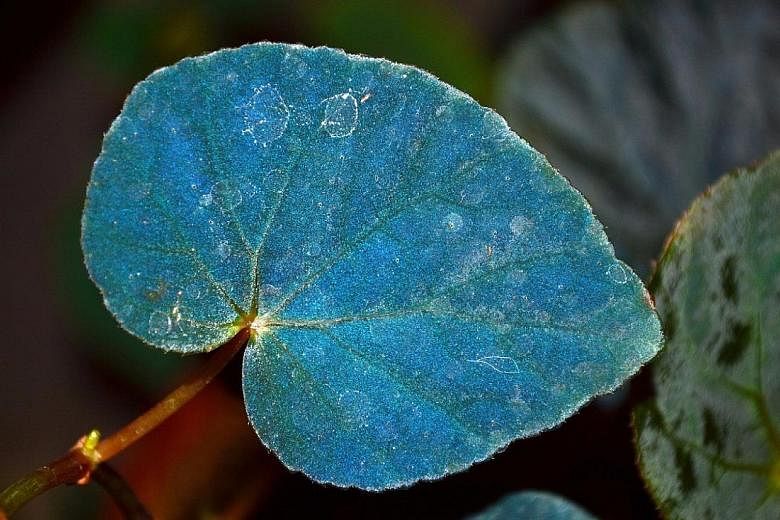WASHINGTON • Plants make energy with chloroplasts, chloroplasts are full of chlorophyll, and chlorophyll is green.
But that has not always been so. Studies suggest the earliest photosynthetic organisms were plum-coloured, because they relied on photosynthetic chemicals that absorbed different wavelengths of light.
A new paper in the journal Nature Plants describes how a shimmering blue plant can still exist: Begonia pavonina, or the "peacock begonia", dwells in the dim rain forests of South-east Asia - particularly in Peninsular Malaysia - and has adapted to low levels of sunlight by developing leaves that are an iridescent azure.
The unusual colouring comes from photosynthetic structures called iridoplasts, explained co-author Heather Whitney, an expert in plant surface interactions at the University of Bristol in Britain.
Like chloroplasts, these structures provide the cellular machinery for photosynthesis. They collect light and use it to synthesise molecules that store energy. For light gathering, they also rely on chlorophyll - a pigment that absorbs red and blue light and reflects green (hence their typical appearance).
But when the experts examined B. pavonina cells under a microscope, they noticed the iridoplasts had a strange shape - layered on top of one another, membrane upon membrane separated by a thin film of liquid, like a stack of pancakes held together with maple syrup. This layering of iridoplasts causes the light that hits them to bend over and over again, creating a very dramatic sheen.
"So you have this sort of iridescent shimmer," Dr Whitney said.
More importantly, it enables the structure to absorb the types of light available in the dark landscape beneath the forest canopy - long wavelengths like red and green. Only blue light gets reflected back, and that is what humans see.
Dr Whitney thinks the layering causes light to react more slowly with the photosynthetic chemicals in the structure, allowing yet more efficient light gathering.
WASHINGTON POST

